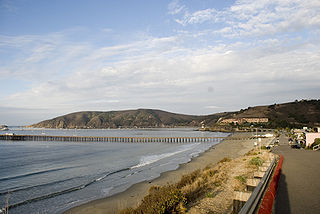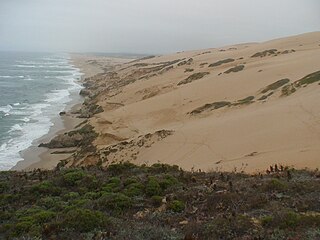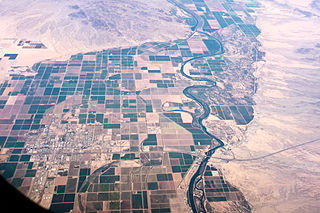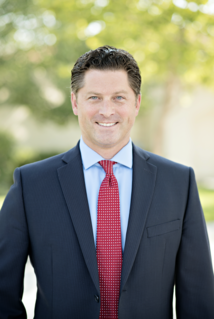Alliance for Nuclear Responsibility is a non-profit, anti-nuclear, public interest organization founded in 2005, and based in San Luis Obispo, California. It is focused on public citizen activism and public participation with regard to the Diablo Canyon Power Plant, also known as the Diablo Canyon Nuclear Power Plant. [1] The focus of the group is primarily on using leverage at the level of state agencies such as the California Public Utilities Commission. Concurrent jurisdiction of their concern also includes the California Coastal Commission, which certifies compliance of all action within the coastal zone which thus includes the plant. Their posture is primarily oppositional. Other venues for activism include the Nuclear Regulatory Commission, California Energy Commission, Regional Water Quality Control Board, SLO County, the California legislature, the office of the state attorney general, and the US Congress, of which they are in the 23rd District. [2]
Rochelle Becker is a co-founder and the current executive director, and has contended experience on nuclear safety issues for 35 years. According to the Alliance website, she is on a California state review committee analyzing water-related impacts from aging reactors, and has met with NRC Chairman Gregory Jaczko to discuss the position of the Alliance. She is also active on issues pertaining to the San Onofre Nuclear Generating Station (SONGS).
David Weisman is also active with the Alliance, and recently has interviewed widely with respect to the Fukushima aftermath. Mr. Weisman asserts that the Alliance is pro-labor and in support of jobs, and that nuclear power is not economical. The Alliance distinguishes itself in this regard from organizations such as the Sierra Club, which are primarily focused on the environmental impacts of nuclear power. [3] He recently appeared at a Nuclear Regulatory Commission presentations, in the San Luis Obispo and Santa Barbara counties on June 15 and 16th, respectively. [4]

San Luis Obispo (; SLO is a city in the U.S. state of California, located in San Luis Obispo County, approximately 190 miles north of Los Angeles and 230 miles south of San Francisco. Located in Southern California's Central Coast region, the population of the city was 45,119 at the 2010 census. The population of the county was 269,637 in 2010.

The Central Coast is an area of California, United States, roughly spanning the coastal region between Point Mugu and Monterey Bay. It lies northwest of Los Angeles County and south of San Mateo and Santa Clara counties. From south to north, there are six counties that make up the Central Coast: Ventura, Santa Barbara, San Luis Obispo, Monterey, San Benito, and Santa Cruz.

The Governor Edmund G. Brown California Aqueduct is a system of canals, tunnels, and pipelines that conveys water collected from the Sierra Nevada Mountains and valleys of Northern and Central California to Southern California. Named after California Governor Edmund Gerald "Pat" Brown Sr., the over 400-mile (640 km) aqueduct is the principal feature of the California State Water Project.

The Diablo Canyon Power Plant is an electricity-generating nuclear power plant near Avila Beach in San Luis Obispo County, California. Since the permanent shutdown of the San Onofre Nuclear Generating Station in 2013, Diablo Canyon is the only operational nuclear plant left in the state. The plant has two Westinghouse-designed 4-loop pressurized-water nuclear reactors operated by Pacific Gas & Electric (PG&E).

The San Onofre Nuclear Generating Station (SONGS) is a closed nuclear power plant located south of San Clemente, California, on the Pacific coast, in Nuclear Regulatory Commission Region IV. The plant was shut down in 2013 after replacement steam generators failed; it is currently in the process of decommissioning.

Avila Beach is an unincorporated community in San Luis Obispo County, California, United States, located on San Luis Obispo Bay about 160 miles (257 km) northwest of Los Angeles, and about 200 miles (320 km) south of San Francisco. For statistical purposes, the United States Census Bureau has defined Avila Beach as a census-designated place (CDP). The census definition of the area may not precisely correspond to local understanding of the area with the same name. The population was 1,627 at the 2010 census.

Guadalupe-Nipomo Dunes is the largest remaining dune system south of San Francisco and the second largest in the U.S. state of California. It encompasses an 18-mile (29 km) stretch of coastline on the Central Coast of California and extends from southern San Luis Obispo County to northern Santa Barbara County.
The Abalone Alliance (1977–1985) was a nonviolent civil disobedience group formed to shut down the Pacific Gas and Electric Company's Diablo Canyon Power Plant near San Luis Obispo on the central California coast in the United States. They modeled their affinity group-based organizational structure after the Clamshell Alliance which was then protesting the Seabrook Nuclear Power Plant in coastal New Hampshire. The group of activists took the name "Abalone Alliance" referring to the tens of thousands of wild California Red Abalone that were killed in 1974 in Diablo Cove when the unit's plumbing had its first hot flush.
The 1970s proved to be a pivotal period for the anti-nuclear movement in California. Opposition to nuclear power in California coincided with the growth of the country's environmental movement. Opposition to nuclear power increased when President Richard Nixon called for the construction of 1000 nuclear plants by the year 2000.

Throughout the previous decades anti-nuclear protests in the United States have been a force to be reckoned with as well as a contributing factor in keeping the American public informed on the anti-nuclear movement in the United States. These included the well-known Clamshell Alliance protests at Seabrook Station Nuclear Power Plant and the Abalone Alliance protests at Diablo Canyon Nuclear Power Plant, where thousands of protesters were arrested. Other large protests followed the 1979 Three Mile Island accident.

Conservation Fallout: Nuclear Protest at Diablo Canyon is a 2006 book by John Wills.

The Sundesert Nuclear Power Plant was a proposed California nuclear power station, formally submitted in 1976. Facing firm opposition from the state's Governor Jerry Brown and denied a permit by a state agency, plans for the construction of the power facility were rejected in 1978 after 100 million dollars had been spent towards its construction. The Sundesert proposal was the last major attempt to build a nuclear plant in California.
The Hosgri Fault is an offshore fault zone located near the Central Coast of California in San Luis Obispo County. The main fault stretches for about 87 miles (140 km), and is located nearest to the coastal communities of Cambria, San Simeon, Morro Bay, Baywood Park-Los Osos and Avila Beach. The fault system is some 260 mi (420 km) long, and is a right-lateral strand of the San Andreas Fault system.
Samuel Blakeslee is the founding Director of the Institute for Advanced Technology & Public Policy at California Polytechnic State University, San Luis Obispo. Blakeslee is a former Republican California State Senator representing California's 15th State Senate district which included the counties of Santa Clara, Monterey, San Luis Obispo, Santa Cruz and Santa Barbara. He previously served as a California State Assemblyman from California's 33rd State Assembly district, and a former State Assembly Republican Leader. He was elected to the California State Assembly in 2004 to represent the 33rd Assembly District, He was re-elected in 2006 and 2008, and elected to the California State Senate in 2010. Blakeslee retired from the Senate in December 2012.
San Luis Obispo Mothers for Peace (SLOMFP) is a participant in the anti-nuclear movement in California which is depicted in the anti-nuclear documentary film Dark Circle during the early years of protest opposing the Diablo Canyon Power Plant (DCPP). DCPP was the first nuclear power plant to have its license suspended, which resulted from disclosure that they installed safety systems incorrectly. In Dark Circle, Mothers for Peace takes credit for delays which prevented the plant from going online prior to the discovery of the errors.
Diablo Canyon (Nuclear) Power Plant, located in San Luis Obispo County California, was originally designed to withstand a 6.75 magnitude earthquake from four faults, including the nearby San Andreas and Hosgri faults, but was later upgraded to withstand a 7.5 magnitude quake. It has redundant seismic monitoring and a safety system designed to shut it down promptly in the event of significant ground motion.

The San Luis Obispo City Fire Department provides fire protection and emergency response services for the city of San Luis Obispo, California and protects a population of approximately 47,000 people; however that number increases to over 100,000 during weekdays. In addition to the city, the department is also responsible for California Polytechnic State University which adds at approximately 24,000 people to the responsible population. San Luis Obispo also neighbors the Diablo Canyon Nuclear Power Plant and provides mutual aid to the plant during emergencies.

Jordan Cunningham is an American small business owner and politician representing the 35th district in the California State Assembly. He is a Republican who was elected in November 2016. Cunningham's district encompasses San Luis Obispo County and portions of Santa Barbara County. Prior to being elected to the state assembly, he was a school board trustee for the Templeton Unified School District and a Deputy District Attorney for San Luis Obispo County.
Rancho Pecho y Islay was an 8,856.8-acre (35.842 km2) Mexican land grant in the Irish Hills, Montaña de Oro State Park and Diablo Canyon Power Plant in present-day San Luis Obispo County, California.
| Wikibooks has more on the topic of: Alliance for Nuclear Responsibility |